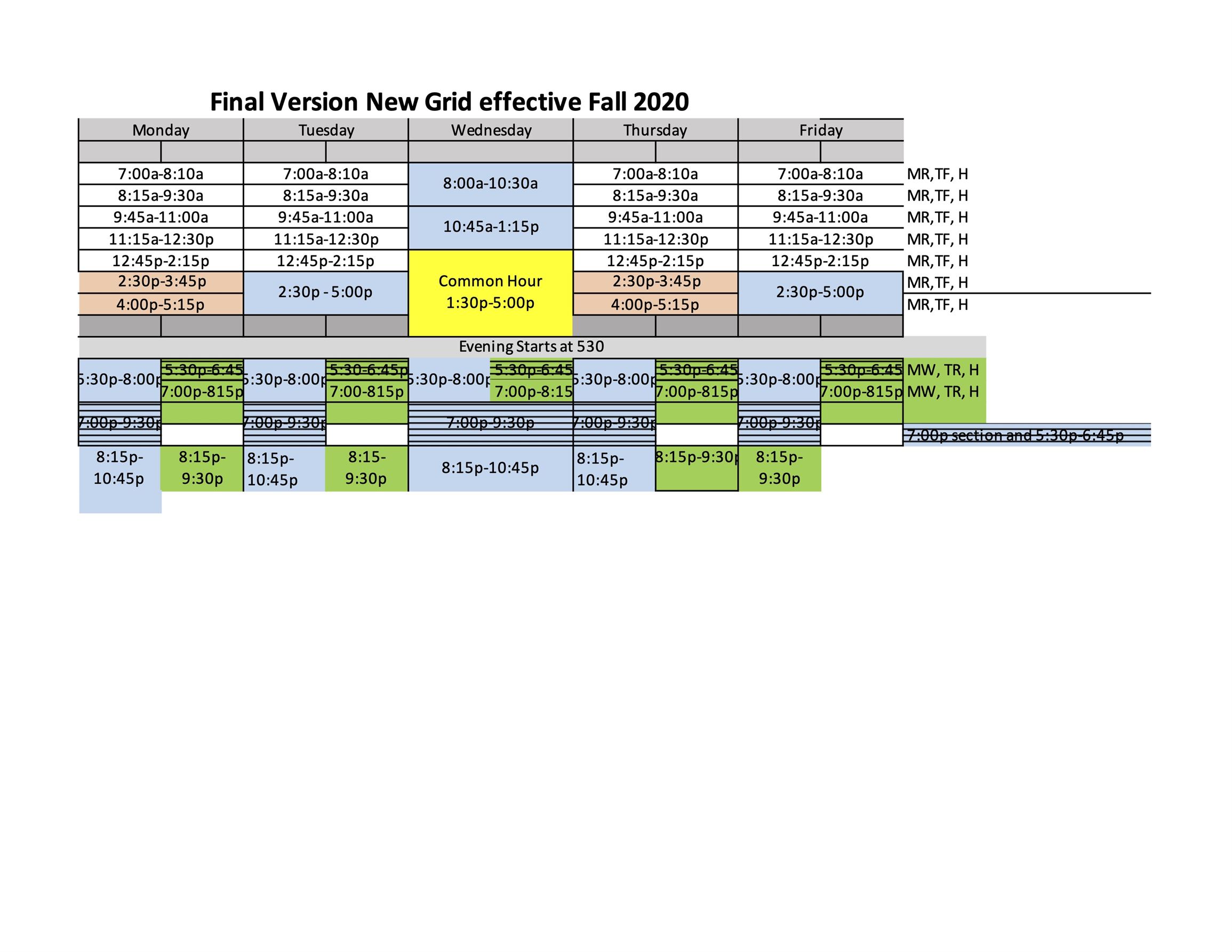Earlier this week, the Montclair State University Provost released a new class schedule grid for the entire university set to go into effect for the fall 2020 semester.
The new grid features both earlier and later classes starting at 7 a.m. and ending at 10:45 p.m. There are also more blocks scheduled on Mondays and Fridays, creating a bigger window for common hours on Wednesdays between 1:30 p.m. and 5 p.m.
Classes that take place twice a week will fall on Monday and Thursday or Tuesday and Friday.
According to an email from Willard Gingerich, which was sent to faculty members on Monday, Nov. 4, “the old grid has simply collapsed under the growing demands of 21,000 students, including more demand for evening classes and an anticipated expansion of graduate needs.”
Some students at Montclair State are concerned with the new grid’s earlier class times, including Grace Wampler, a junior music major.
“It would be changing professors’ schedules,” Wampler said. “If they have a 7 a.m. [class], a lot of our adjuncts live in the city, and they have to change when they leave, and they have to leave a lot earlier.”

The new schedule grid for the fall 2020 semester will feature new time blocks for classes.
Table courtesy of The Montclair State University Provost
According to Gingerich’s email, “This grid will make year by year schedule planning far more efficient and so will [facilitating] planning for program delivery, faculty schedules (including adjunct schedules) and most importantly, students’ ability to plan their path to degree and work schedules for those who have them.”
While others are a little skeptical about the change, some students are ready to embrace it, including Nicholas Martinez, a junior exercise science major.
“I think this is a great new idea that will help a variety of students and faculty manage their school schedule, but also work schedule in a more efficient way,” Martinez said.
He believes that the new grid will allow students to choose more options so that they can easily plan their schedules around other weekly obligations.
Mayelin Nunez, a sophomore educational foundations major, also agrees that adding more time slots is beneficial for students, especially those with later registration times and need to search for alternatives when classes get full.
“Being able to take any class at any time would make life easier,” Nunez said. “When it’s time to register for classes, it’s usually so frustrating when most of the classes I want to take don’t have many options and I have to switch my whole schedule around.”
With all of the modifications to the grid, Gingerich knows that it is very unlikely that the university will be able to meet the needs of every single student and faculty member.
“This grid will not be perfect and no grid will ever accommodate everyone’s preferences,” Gingerich said. “We will continue to refine it toward as much perfection as our systems and our classroom facilities allow.”
Additional Reporters: Rosaria Lo Presti and Mackenzie Robertson



